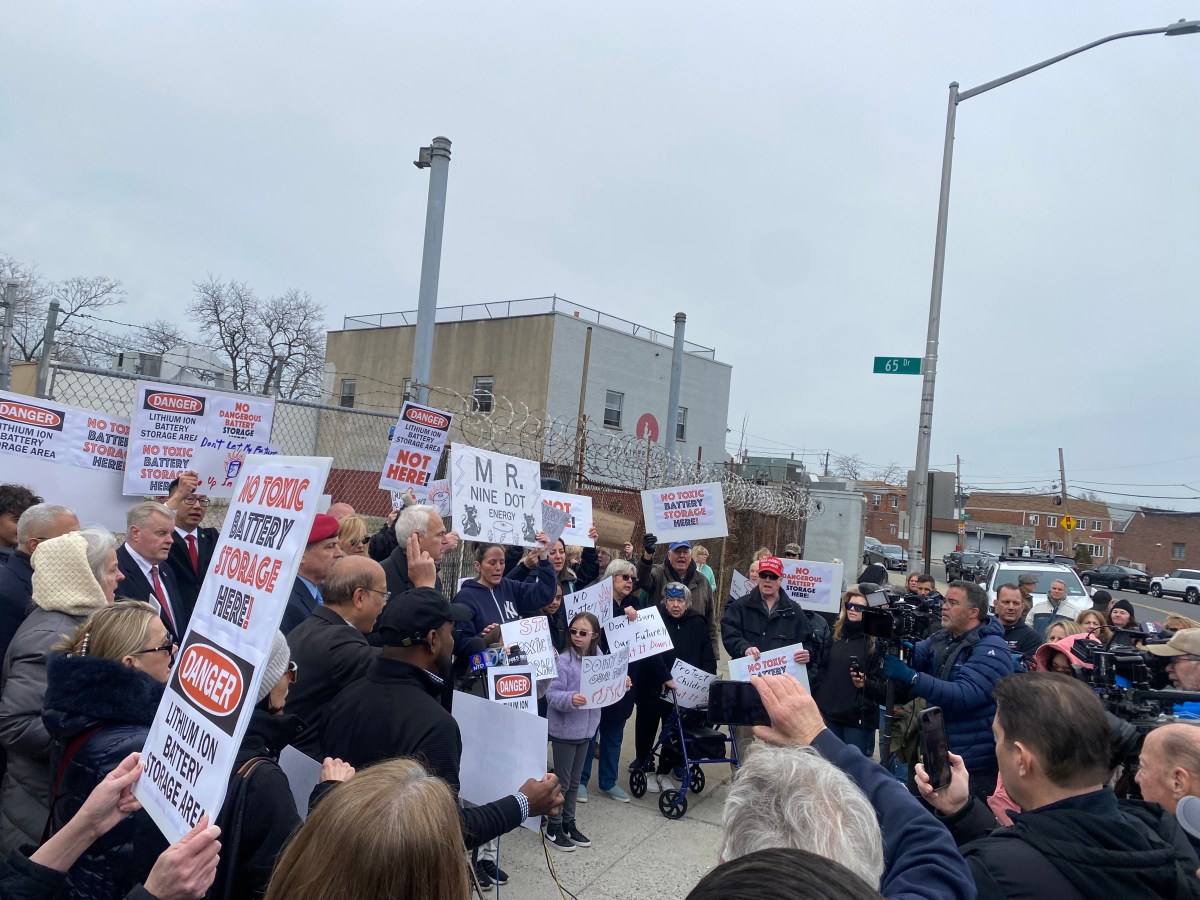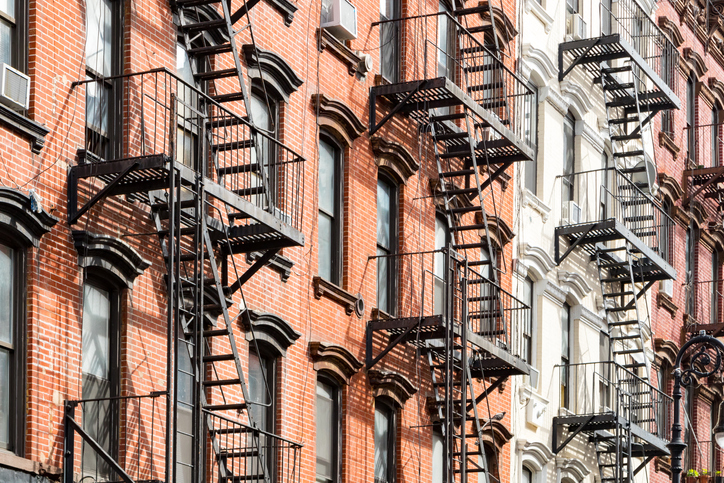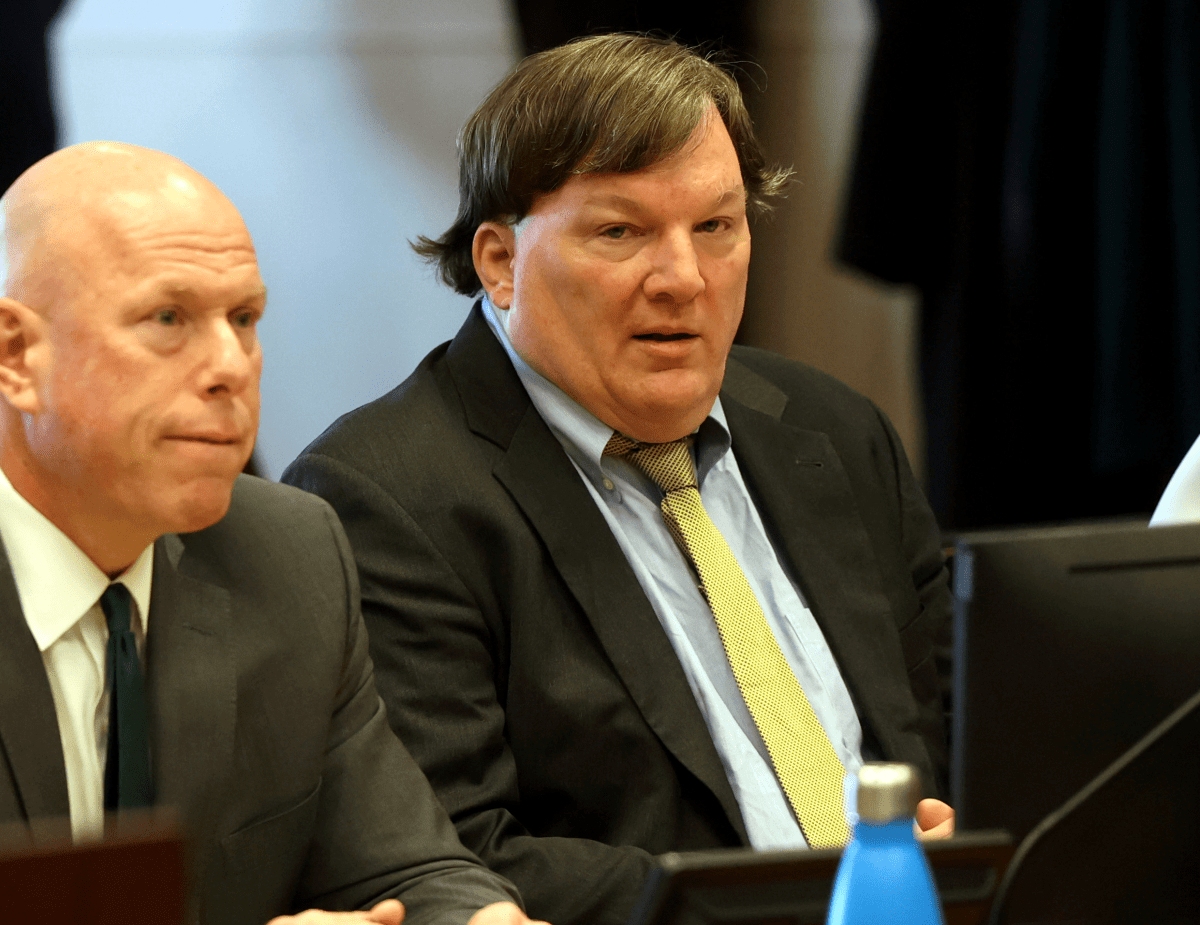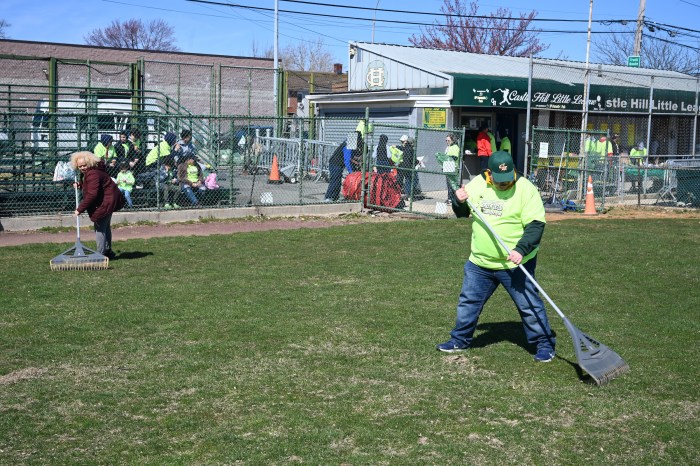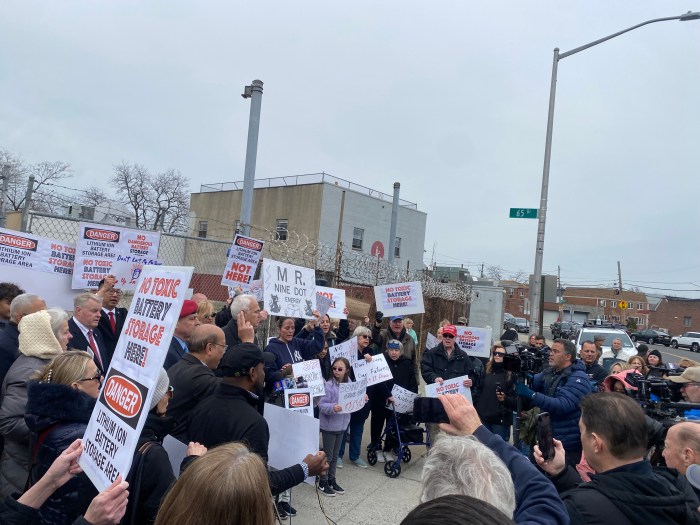
BY EILEEN STUKANE | The outlook for affordable housing in New York City can seem good or bad depending on your perspective, but there’s no denying that a lot of energy is being devoted to the cause. Just this week, Eric Bederman, spokesperson for NYC’s Department of Housing, Preservation and Development (HPD) reported to Chelsea Now: “We have a target to finance 16,000 affordable units in Fiscal Year 2015, and we’re currently on pace to exceed that goal.” Closer to home, NYC’s Department of Economic Development Corporation (EDC) and HPD have already begun meeting with the Chelsea and Hell’s Kitchen community in relation to the development of one of the sites suggested in the Community Board 4 (CB4) Affordable Housing Plan — a call for 11,000 affordable apartments.
Initially drafted in June 2014, the CB4 Affordable Housing Plan has grown from its original 60 pages to 81. It has yet to be rubber-stamped by the board, but that hasn’t stopped elected officials and city agencies from noticing the sites on city-owned land that would be the most economically feasible for development.
This month brought Mayor de Blasio’s State of the City address, with his commitment to the construction of 80,000 new units of affordable housing by 2024 — which as he says, “means building new affordable units at twice the average annual rate of the past 25 years.”
The implementation of suggestions in the CB4 Plan by city agencies dovetails with the de Blasio administration’s push for mandatory inclusionary zoning, which will require developers in upzoned areas that allow for buildings with greater floor area and height (which has happened in the CB4 community) to keep a certain percentage of units in their buildings affordable. The percentages, however, would be negotiated project by project, between the city and developers, and hopefully bring about more than the traditional 80/20 split — a percentage representing market rate vs. affordable housing, which developers have long agreed to in order to obtain tax exemptions and building incentives.
In recent plans for Astoria Cove, a test case for mandatory inclusionary zoning, 27 percent of apartments will be affordable in a 73/27 split. It has been announced that Carl Weisbrod, chairman of the NYC Planning Commission as well as director of the NYC Department of City Planning (DCP), will present the de Blasio administration’s latest zoning policies at the Crain’s Real Estate Conference on March 17th. These actions all land on the plus side for affordable housing.
On the minus end, however, the number of existing affordable apartments is at risk. The 421-a tax exemption that can shift affordable apartments to market rate when the exemption ends, and the use of affordable apartments as illegal hotel rentals, are causing a drop in availability. Developers who constructed residential buildings with the 421-a tax exemption incentive were only required to keep a percentage — normally 20 percent — of apartments as “affordable” for the life of the exemption, usually 20 years. In many buildings, those 20 years are coming to an end.

The Brookfield Property Partners’ 62-story residential tower under construction at 435 W. 31st St.
ACTION BEGINS ON CB4 PLAN
The site from the CB4 Affordable Housing Plan that has attracted the most attention is the city-owned land at 493 11th Ave. (btw. W. 39th & W. 40th Sts.) — the former Slaughterhouse site which is now an NYPD parking lot on 25,000 square feet of land.
At a CB4 Land Use Committee meeting open to the community on Feb. 11th, Lusheena Warner, assistant vice president, Government and Community Relations, NYC Economic Development Corporation (EDC), presented the city’s plan to offer the site in a Request for Proposal (RFP) to developers. Usually the HPD would be the city agency presenting a development project to the community. The EDC as main presenter with HPD as partner, with its representatives secondarily attending, is evidence of the administration’s repositioning of city agencies — some with new divisions, such as the HPD’s Office of Neighborhood Strategies, to concentrate on the priority that is affordable housing.
“We see this site as an opportunity to advance the Mayor’s vision since one of the key strategies in Housing NY [the Mayor’s five-borough, decade-long plan to create or preserve 200,000 units of affordable housing] is creating and supporting mixed use, mixed income communities with affordable housing as the anchor,” said Warner. She explained that she wanted to open the conversation with the community, to learn priorities, with the goal of releasing an RFP in the summer or fall of this year.
The CB4 Plan suggested that 322 permanently affordable apartments could be built on the site, and as Joe Restuccia, co-chair of the CB4 Housing, Health, and Human Services Committee, and executive director of the Clinton Housing Development Company (CHCD), explained, “We specifically called this site for affordable housing, and then for mixed use, which is not a hotel with housing, but housing with some sort of retail component such as a supermarket.”
Board members and community residents in the audience emphasized that the site should be developed for 100 percent affordable housing for low, moderate and middle incomes. When EDC representatives spoke about having developers do research and analysis of the possibilities, Christine Berthet, chair of CB4 responded, “We are not asking them to do analysis. We know the analysis. We want 100 percent affordable for whatever turns out to be the number of units, and two floors of commercial/retail. We don’t need an analysis.”
Restuccia added, “None of our public sites were used for any market-rate housing whatsoever during the Bloomberg years. Let’s continue that tradition. A mixture of incomes for us is the most important part, and it can’t be just the lowest and highest with everything in between. We need to set parameters, not the developers. We have lots of market rate housing; we don’t have affordable housing. We don’t want just one flavor; we want all flavors. Let’s have the developers respond.”
Warner responded, “Even if we have parameters we still want developers to do the research and expect them to include response and analysis.” In this opening conversation, there were no commitments: “We’re asking developers to do their homework. We obviously have to evaluate. We’re going to put them through a very rigorous process. At the same time we’re here today so you can say what you really need, 60 percent, 80 percent, whatever it is we want to hear from you,” said Warner. The committee and the community were strong in their advocacy for 100 percent permanently affordable apartments.
Restuccia explained, “The market is working in our neighborhood. We don’t need to stimulate it and in fact, our affordable sites need to counterbalance the market forces. We’re looking for you to say, ‘This is a publicly owned site, by selling it for a dollar or very little means, you have a subsidy there and other capital subsidy can make it work.’ ”
Bringing affordable housing to fruition takes time, however. The EDC’s timeline for the Slaughterhouse site, proposes 2018 as the year when construction would begin.
The Brookfield Property Partners’ 62-story residential tower at 435 W. 31st St., with 20 percent of its 844 units affordable, just broke ground in January, and won’t be completed until 2018. The scheduling of applications for its affordable housing lottery is far in the future. Meanwhile, other sites in the CB4 Affordable Housing Plan that are moving along are:
• The vacated 30,000 square foot Hunter College building at 450 W. 41st St., which could be demolished for 239 affordable apartments. It is city-owned and one of the properties actively under consideration for development by the city.
• Already in the pipeline for HPD development, Harborview Terrace, a two-building complex developed by the New York Housing Authority (NYCHA) at 535 W. 55th St., has been having tenant association meetings with the community board and community stakeholders for a possible third building comprised of 200 affordable apartments. Tenants want to be assured that a plan for green space around the project is agreed upon before going further.
• In March 2015 CHDC will close on Site 7, a 12-story residential building at 540 W. 53rd St. which was under public review. Upon its planned completion in 2016, the building will have 103 permanently affordable units.
• Another issue to be grappled with in order to move affordable housing forward in the community is the rezoning of the industrial corridor that is 11th Ave., from commercial to residential — which would allow more floor area ratio (FAR) for building. Buildings could also go higher with the use of air rights from the Hudson River Park Trust.
• As for creating a micro park on the empty NYC Department of Sanitation (DOS) site at 136 W. 20th St., that had been proposed in the CB4 Plan as a site for 84 affordable apartments, Restuccia recently referred to the park as a “glimmer” with several areas of interest in the community needing to come together to make it happen. “They’re not far enough along yet at all, but the administration is clearly flexible,” he said. In a Feb. 23 email to Chelsea Now, Councilmember Corey Johnson acknowledged the addition of public green space on the site as “a longtime goal of the community, and I’m working collaboratively with the de Blasio Administration, the Borough President’s office, community leaders and Community Board 4 to make it a reality.”

The vacated (and city-owned) Hunter College building at 450 W. 41st St. could be demolished to make way for 239 affordable apartments.
‘AFFORDABLE’ STATUS LOST WHEN 421-a EXEMPTION EXPIRES
The Association for Neighborhood Housing Development (ANHD) has reported that according to HPD, in the fiscal year 2013, approximately $1.1 billion of the 421-a Developer’s Tax Exemption was granted for 153,121 residential units. Of those, 12,748 were affordable. The 421-a tax exemption program, which was created in 1971 to stimulate building in New York City, and evolved into the 80/20 developer’s incentive for the inclusion of 20 percent of affordable housing in new construction, is expiring in June 2015. Regulated by the state government, the 421-a tax will be voted on in Albany. What the de Blasio administration thinks about 421-a has yet to be revealed, but a coalition of tenant and community organizations has already began protesting its renewal.
The way the 421-a works as an incentive is that a developer is given a tax abatement for the difference of what the land value was originally, compared to when it was fully developed. CB4 has been working to make sure the percentage of affordable apartments in the district’s new buildings are permanently affordable. However, in many buildings, the 20 percent of affordable units are only affordable for the life of the tax abatement (which can be anywhere from 20 to 35 years).
As Chelsea Now has reported in the past, the community could soon lose 1,700 affordable apartments unless finding a way to make them permanently affordable. “The amount that 421-a costs for the number of affordable units it generates just doesn’t pay off,” says Sarah Desmond, executive director, Housing Conservation Coordinators (HCC). “Clearly the city is looking at it, and has historically looked at it, as something other than an affordable housing program. From the standpoint of affordable housing it doesn’t generate enough units and those units only exist for a period of time.”
Moses Gates, director of planning and community development, ANHD, does not hesitate to say, “The 421-a program as it exists now is a boondoggle and really needs to be ended.” The ANHD argues that the $1.1 billion not paid in tax revenue could have been used for schools, infrastructure and affordable housing. Also, according to the ANHD, developers get to “double-dip” by counting the same 20 percent set aside as affordable units twice — once as 421-a tax break, then as part of voluntary inclusionary housing.
Steven Spinola, president, Real Estate Board of New York (REBNY), sees June as a time to strengthen, not terminate, 421-a: “The Mayor’s plan calls for the creation of 240,000 new market rate and affordable housing units over the next 10 years. To offset the property tax burden and construction land costs, incentives like 421-a will be necessary to create the new units.”
Joe Restuccia has another idea: “The way 421-a has been applied doesn’t make sense. The tax exemption should apply just to the affordable units because you can’t carry full taxes on units that have restricted rents. The idea of applying 421-a to an entire building that has extremely high rents just means that the owner gets to have everything. We’ve set up a political, not financial, equation where most owners believe that they’re entitled to a higher return resulting from the city’s tax exemptions.”
The fate of 421-a will be determined in June in Albany, as will the city’s rent regulations, which also expire in June. Summer will be a crucial time for deciding both the longevity of affordable housing in new construction, and the future of existing rent stabilized apartments. As previously reported by HCC, over 100,000 units in Chelsea and Hell’s Kitchen have been lost to vacancy decontrol. A provision in the state’s rent regulation law provides that if a monthly rent in a stabilized apartment can be raised to $2,500, the apartment can be deregulated. Activist groups are gearing up to be a presence in Albany to fight for rent regulation. Says Desmond, “Vacancy decontrol has facilitated ‘for profit’ uses when you have an affordable crisis happening in the city.”

Harborview Terrace, a NYCHA complex on W. 55th St., may add a third building comprised of 200 affordable apartments.
ILLEGAL HOTELS, AIRBNB AND AFFORDABLE HOUSING
A recent oversight hearing at the NYC Council’s Housing and Buildings Committee brought a face-to-face meeting chaired by NYC Councilmember Jumaane Williams and attended by 10 other Councilmembers, and Airbnb’s head of global public policy, David Hantman. At issue is the fact that what could be affordable apartments rented to individuals or families are being used for private short-term rentals — which under a 2010 law, are considered illegal hotels. Single and two-family homes are exempt but a rental apartment, rented for under 30 days when the host is not present, is illegal. “There are no ‘buts’ about it,” says Gates, “The way Airbnb operates is completely and blatantly against the law. Airbnb wouldn’t be lobbying to change the law if they were currently following the law.”
At the Council meeting, Hantman testified that New York City should find a way to legalize short-term rentals of entire apartments for less than 30 days (but he did not provide specifics on how this should be done). Airbnb’s public position is that it wants to change the existing law to allow the company to collect and remit taxes to the city and state, and increase penalties on unscrupulous landlords who are systematically emptying their buildings and turning vacant apartments into illegal hotels (but again, no specifics are offered).
Only a few weeks after the Council meeting, however, the law as it stands was given a considerable boost when Manhattan Housing Court Judge Jack Stoller evicted a tenant who was renting his 450 W. 42nd St. rent stabilized apartment in an 80/20 building for $649 a night, while he was living with his family in a high-end home in Queens. This is the first such decision to evict a tenant. Judge Stoller wrote in his ruling that profiteering by using a residential apartment as a hotel “undermines the purpose of the Rent Stabilization Code.”
The New York State Attorney General’s office did an analysis of 497,322 transactions for stays between January 2010 and June 2014 and found that 72 percent were for private short-term rentals. As a result of Schneiderman’s findings, Airbnb removed 2,000 hosts from its website — but purportedly, over 2,000 hosts have been added.
As Councilmember Helen Rosenthal told Chelsea Now: “In January’s Housing Committee Hearing, Airbnb representatives showed a blatant disregard for New York laws. They were unwilling to share data on how many of their users break the law, and they had no interest in changing their platform to require users to follow the law. Airbnb representatives made clear that their only interest is to continue to exploit NYC residential housing for their own profit.” Councilmember Rosenthal also pointed out that the Mayor’s Office of Special Enforcement has not had the resources to combat illegal short-term rentals. Judge Stoller’s ruling could be a game-changer.
TENANT HARASSMENT TASK FORCE FORMED
With tenant complaints in 2014 nearly double the number from 2011, a new multiagency Tenant Harassment Prevention Task Force has been formed by NY Governor Andrew Cuomo, Attorney General Eric Schneiderman and NYC Mayor Bill de Blasio. Complaints will be investigated by the HPD, the NYC Department of Buildings and the state’s Tenant Protection Unit, created by Governor Cuomo in 2012.
As the real estate market is hotter than ever, city landlords have intensified their harassment of tenants to drive them out of rent-regulated apartments which the landlords could then convert into luxury rentals. Affordable housing is being eliminated for market rate apartments. This is happening right here in our community. Chelsea Now shined a spotlight on this issue last summer in relation to 222-224 W. 21st St. (visit ChelseaNow.com and search for “Tenants Rights Trashed Amidst Market-Rate Conversion”).
Schneiderman urged any tenant who feels that they are being unfairly harassed or abused to get in contact with the task force either through the website (ag.ny.gov) or call 311. Last week when Mayor de Blasio announced the task force, he said with determination: “Right now, a lot of people — a lot of bad landlords — think they will not get caught. Our message today is you will get caught. All of these agencies are going to work together. You will get caught. There will be severe penalties. You’re going to wish you had not violated the law.”
COMMUNITY PREFERENCE AND THE LOTTERY SYSTEM
In 2014 there were 41 lotteries held for 2,500 affordable NYC apartments. One and a half million people applied for those 2,500 — not good odds for winning. Even though Mayor de Blasio plans to produce 80,000 affordable apartments over the next 10 years, there will still not be enough to meet the demand, which has increased since 2013 when applications began being accepted online at NYC Housing Connect (nyc.gov/housingconnect).
Being one of the chosen, however, is just the beginning. Applications are
randomly selected and given a log number based on order of selection. If your number is chosen to move forward in the process, you are given an interview date and must bring a packet of documents including a birth certificate, pay stubs, tax returns, proof of address and more.
There has been a tradition for a percentage of affordable units to be set-aside for community residents. That practice is now being scrutinized by the U.S. Department of Housing and Urban Development (HUD) for possible violation of the 1964 Civil Rights Act, which prohibits developments or agencies that receive federal money from discriminating based on race or national origin.
Could community preference lead to discrimination in a community where the population leans toward a certain group which does not represent the city as a whole? This is yet another possible detour in the road to finding affordable housing — but nevertheless, the quest continues.




